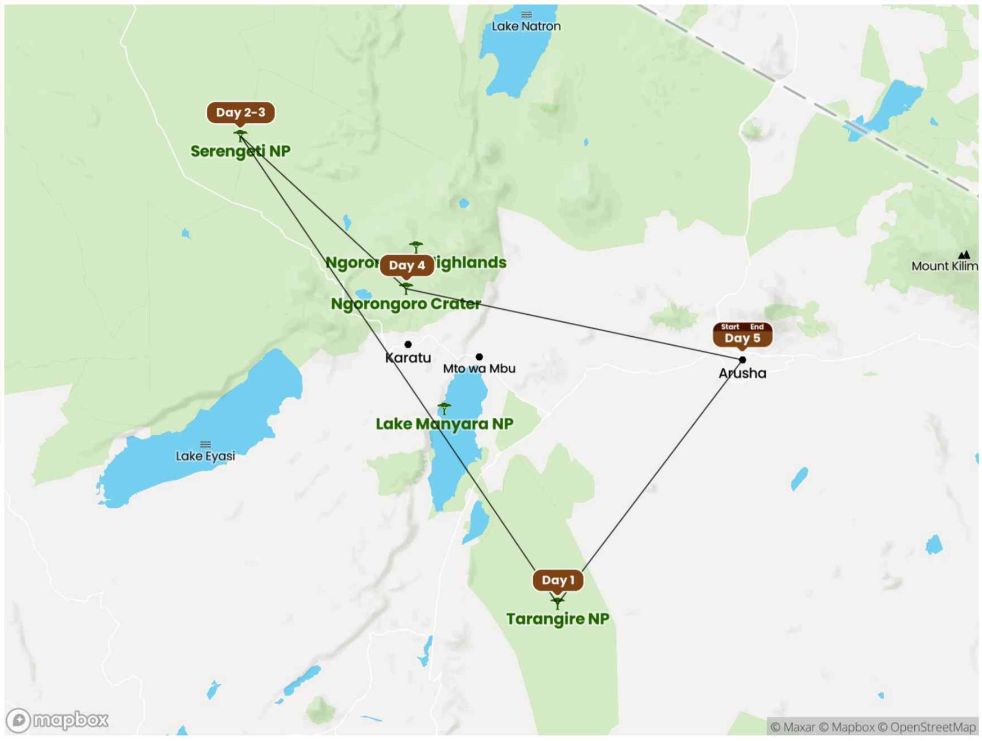- 2
- 1
- 6
- 4

Serengeti National Park
Overview:
Serengeti National Park, located in northern Tanzania, is one of Africa’s most renowned wildlife conservation areas. Established in 1951, this UNESCO World Heritage Site spans approximately 14,763 square kilometers (5,700 square miles) and is famous for its stunning landscapes, diverse ecosystems, and remarkable wildlife.
Ecosystem and Geography:
The park’s name comes from the Maasai word “Siringet,” meaning “endless plains,” which perfectly describes its vast savannahs. The landscape includes grasslands, woodlands, and riverine forests, offering a variety of habitats for numerous species. Key geographical features include the Seronera River, the Ngare Nanyuki River, and the kopjes—rocky outcrops that provide vantage points for predators.
Wildlife:
Serengeti is home to an incredible diversity of wildlife, including:
– The Big Five: Lions, leopards, elephants, buffalo, and rhinoceros.
– Migratory Animals: The park is famous for the Great Migration, where over 1.5 million wildebeest and hundreds of thousands of zebras migrate in search of fresh grazing lands.
– Predators: Alongside lions and leopards, you can find cheetahs, hyenas, and various birds of prey.
– Birdlife: The park hosts over 500 species of birds, making it a birdwatcher’s paradise.
Activities:
Visitors can engage in various activities, including:
– Game Drives: Explore the park on guided safari tours to witness wildlife in their natural habitats.
– Balloon Safaris: Experience breathtaking views of the Serengeti from above as you glide over the plains in a hot air balloon.
– Walking Safaris: Join expert guides for walking safaris to learn about the ecosystem and get closer to nature.
– Cultural Experiences: Interact with the Maasai people and learn about their traditions and way of life.
Best Time to Visit:
The best time to visit Serengeti National Park is during the dry season (June to October), when wildlife viewing is at its peak. However, the timing of the Great Migration varies, typically occurring from January to March (calving season) and from June to August (river crossings).
Conservation Efforts:
The Serengeti is not only a tourist destination but also a critical area for wildlife conservation. Efforts are ongoing to protect its biodiversity, combat poaching, and manage human-wildlife conflict in surrounding communities.
Conclusion
Serengeti National Park offers a unique blend of breathtaking scenery and unparalleled wildlife experiences, making it a must-visit destination for nature enthusiasts and adventure seekers alike. Its iconic landscapes and rich biodiversity truly embody the essence of Africa’s wild heart.
